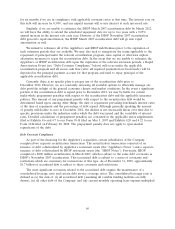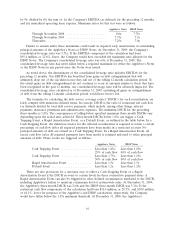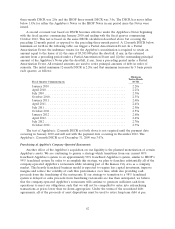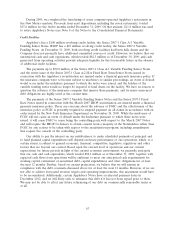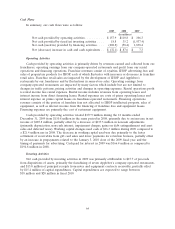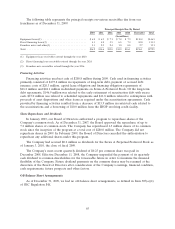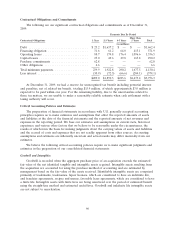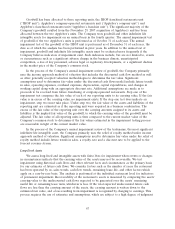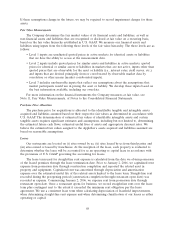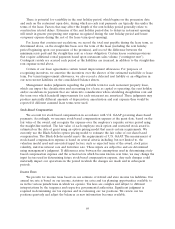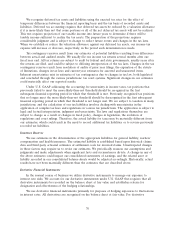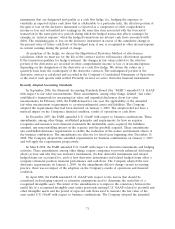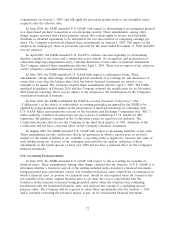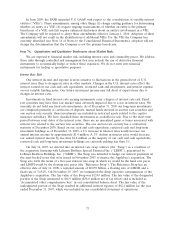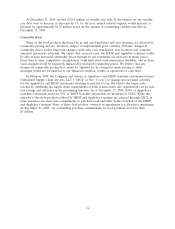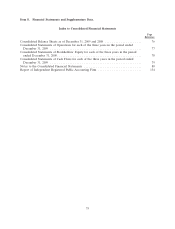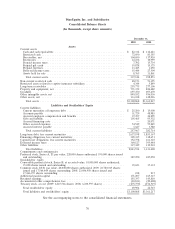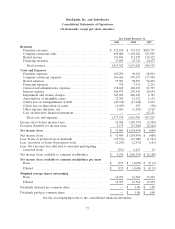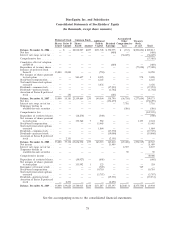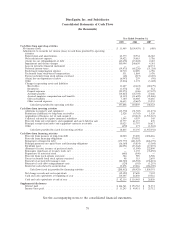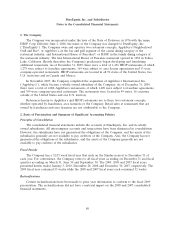IHOP 2009 Annual Report Download - page 89
Download and view the complete annual report
Please find page 89 of the 2009 IHOP annual report below. You can navigate through the pages in the report by either clicking on the pages listed below, or by using the keyword search tool below to find specific information within the annual report.We recognize deferred tax assets and liabilities using the enacted tax rates for the effect of
temporary differences between the financial reporting basis and the tax basis of recorded assets and
liabilities. Deferred tax accounting requires that deferred tax assets be reduced by a valuation allowance
if it is more likely than not that some portions or all of the net deferred tax assets will not be realized.
This test requires projection of our taxable income into future years to determine if there will be
taxable income sufficient to realize the tax assets. The preparation of the projections requires
considerable judgment and is subject to change to reflect future events and changes in the tax laws.
When we establish or reduce the valuation allowance against our deferred tax assets, our income tax
expense will increase or decrease, respectively, in the period such determination is made.
Tax contingency reserves result from our estimates of potential liabilities resulting from differences
between actual and audited results. We usually file our income tax returns several months after our
fiscal year end. All tax returns are subject to audit by federal and state governments, usually years after
the returns are filed, and could be subject to differing interpretation of the tax laws. Changes in the tax
contingency reserves result from resolution of audits of prior year filings, the expiration of the statute
of limitations, changes in tax laws and current year estimates for asserted and unasserted items.
Inherent uncertainties exist in estimates of tax contingencies due to changes in tax law, both legislated
and concluded through the various jurisdictions’ tax court systems. Significant changes in our estimates
could materially affect our reported results.
Under U.S. GAAP addressing the accounting for uncertainty in income taxes, tax positions that
previously failed to meet the more-likely-than-not threshold should be recognized in the first
subsequent financial reporting period in which that threshold is met. Previously recognized tax positions
that no longer meet the more-likely-than-not threshold should be derecognized in the first subsequent
financial reporting period in which that threshold is not longer met. We are subject to taxation in many
jurisdictions, and the calculation of our tax liabilities involves dealing with uncertainties in the
application of complex tax laws and regulations in various tax jurisdictions. The application is subject to
legal and factual interpretation, judgment and uncertainty. Tax laws and regulations themselves are
subject to change as a result of changes in fiscal policy, changes in legislation, the evolution of
regulations and court rulings. Therefore, the actual liability for taxes may be materially different from
our estimates, which could result in the need to record additional tax liabilities or to reverse previously
recorded tax liabilities.
Insurance Reserves
We use estimates in the determination of the appropriate liabilities for general liability, workers’
compensation and health insurance. The estimated liability is established based upon historical claims
data and third-party actuarial estimates of settlement costs for incurred claims. Unanticipated changes
in these factors may require us to revise our estimates. We periodically reassess our assumptions and
judgments and make adjustments when significant facts and circumstances dictate. A change in any of
the above estimates could impact our consolidated statements of earnings, and the related asset or
liability recorded in our consolidated balance sheets would be adjusted accordingly. Historically, actual
results have not been materially different than the estimates that are described above.
Derivative Financial Instruments
In the normal course of business we utilize derivative instruments to manage our exposure to
interest rate risks. We account for our derivative instruments under U.S. GAAP that requires that all
derivative instruments be recorded on the balance sheet at fair value and establishes criteria for
designation and effectiveness of the hedging relationships.
We use derivative financial instruments primarily for purposes of hedging exposures to fluctuations
in interest rates. All derivatives are recognized on the balance sheet at fair value. For derivative
70


